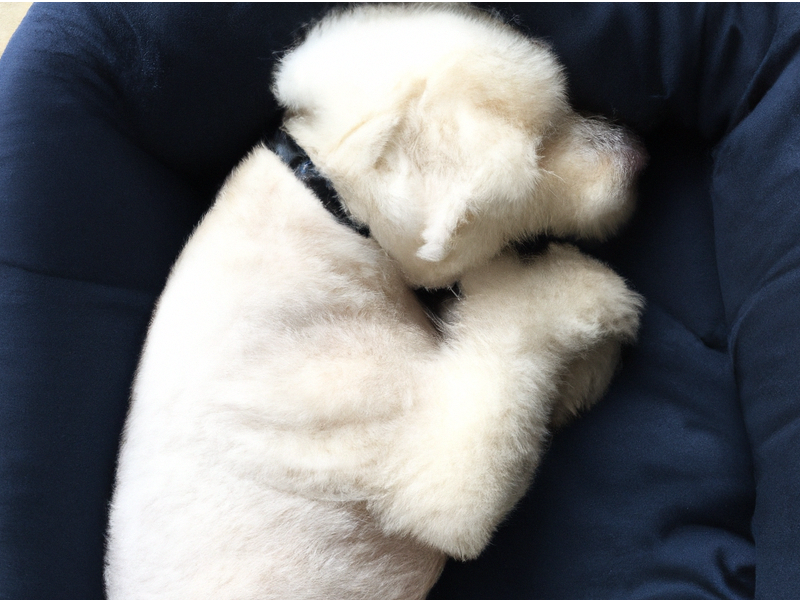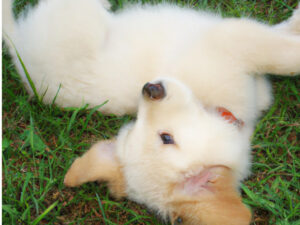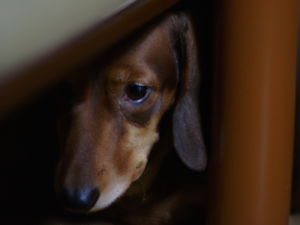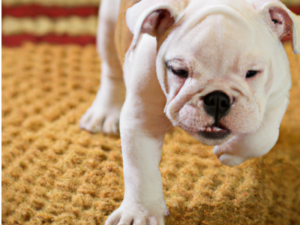Why do dogs scratch their beds?

Dogs scratch their bed because of a survival instinct that is ingrained from their wild ancestors. Dogs descend from wolves, and the instinct to make their sleeping area as comfortable as possible is still present. Nowadays, dogs don’t have to make beds from dirt, sticks, and leaves like wolves do, but they still want to “make their bed” before going to sleep.
Dogs also scratch at their beds because they are marking their territory. They have scent glands on the bottom of their feet, which can secrete pheromones, letting other animals know that area belongs to them. Additionally, dogs scratch because of anxiety. If you are worried that the scratching is because of anxiety, consult your vet.
All in all, the behavior of scratching at beds, along with biting, and spinning in circles before they lay down are all preparations to fall asleep.
Ways to protect your dog’s bed against scratching
If the scratching behavior is causing problems like the bed being ripped up, or the floors and furniture getting scratched, there are a few things you can do, including:
- Trimming their nails every 3-4 weeks, which can help with the tearing and scratching. Trimming their nails will also help protect them from getting infections.
- Getting your dog a more durable bed can also help with the scratching. Beds made up of fabric and stuffing aren’t going to hold up well to digging and scratching. Alternatives to these types of bedding are beds with more durable covers, memory or orthopedic foam dog beds, raised cots, and heating or cooling beds.
Other Bedtime Behaviors
If your dog is scratching their beds, you’ve probably also noticed other behaviors during your dog’s pre-sleep routine. Behaviors could include biting and/or sucking on their bedding, burrowing into covers, and spinning in circles before they lay down, which are preparations to fall asleep.
Again, this is instinctive behavior at play. Our dog’s ancestors used to burrow in to get warm and to hide from potential threats. This behavior, along with circling, helped the wild dog packs to sleep tightly together, which would ensure warmth.
Sleeping disorders
If you’ve noticed irregularities in your dog’s sleep schedule, it is possible that they have a sleep disorder. Insomnia, REM behavior disorder, and narcolepsy have all been reported in dogs. If you think that they are dealing with any of these, set up a visit with your vet.
Insomnia
Insomnia by itself is not commonly seen in dogs. Most cases of insomnia have a root cause. Potential causes are itching from fleas, skin irritations, inflections in the bladder, pain from arthritis, or broken bones. Luckily, causes like these can be addressed with appropriate medical care or medication.
REM Behavior Disorder
Rapid eye movement (REM) sleep is associated with dreaming. REM behavior disorder is when your dog is excessively active during their sleep cycles. This activeness can put your dog into harm, as dogs with this disorder can run into walls or attack someone. If this is an issue for your dog, a veterinarian can prescribe medication that will reduce their activity while asleep.
Narcolepsy
Narcolepsy, when a dog suddenly falls asleep, is frequently seen in puppies. This can be dangerous to them depending on what they are doing when they fall asleep. Most narcolepsy attacks will happen after something exciting, but dogs with narcolepsy can most often be awakened with a shake or loud clap.
Conclusion
Considering dogs are descendants of wild dogs, it is important to remember that some of their traits are biologically instilled in them. So, the next time you see your dog scratching at their bed, just know it is them getting settled in for the night. To find more articles on caring for your pet, click here.






